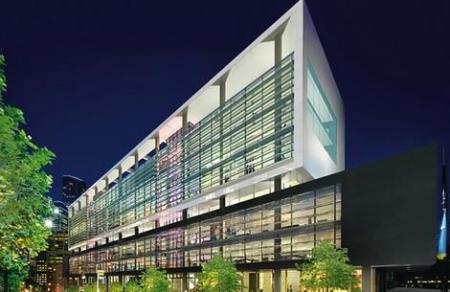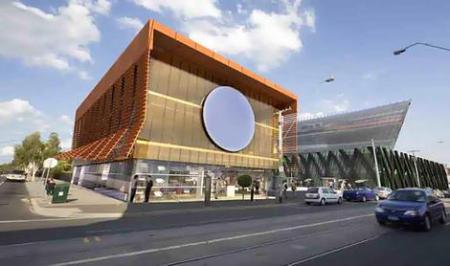Happy new year arkatekts, hope you’ve caught up on some sleep in the time from the last post.
There doesn’t seem to be a lot of news in the world of Melbourne architecture, yet. Perhaps when everyone has had a few more weeks back at work it will start to pick up a bit. Not that everyone doesn’t seem to be pretty damn busy again already. Or looking for a job, there seems to be a bit of that happening at the moment.
In the next month or so we’ll see the new architecture program at Monash swing into action though. According to the newspaper supplement, they admitted 75 students, with approximately half of those coming from high school. Very interested to see how things work out for the study of architecture at Monash; from what I’ve heard it will be a damn good course (but they lose points for the absolutely bloody awful music on their webpage, oh god I’m in cafe del mar hell). The renderings of the building reno by WSH look good.
RMIT‘s admission figures seemed to be down to me at 51, but that was HECS places and let’s face it, architecture is a cash cow for universities, they get in as many full fee paying students as they can because they provide the cash. Desperately needed cash because government funded places are so under-funded, no university could possibly run with HECS students alone.
And Melbourne, well, it is impossible to tell what is going on there, what the hell is a Bachelor of Environments anyway? I’m not necessarily against the Melbourne Model (or the Bologna Model, which is basically what it is), hell, I can think of a lot of advantages to being able to change your mind about architecture and simply be able to change your major, rather than going into a whole new degree, I can think of a lot of people who would have benefited from that.
Something that has happened over the holidays that I think deserves a mention is that the old Melbourne power station demolition has begun. I may be the only person in Melbourne who is actually sad about this, I actually like that building in all it’s greyness. It may not be “pretty” but it was I think a really interesting part of the history of the city in both functional and aesthetic terms. Now no one would consider generating electricity so close to where it is actually used (I’m sorry but a few wind turbines on roof-tops don’t count), it seems that the only functions allowed in any new building in the city are offices, apartments and shops, as though life consists entirely of work, sleep and shopping. And I like it’s concrete grunginess! Sick of slick panels everywhere that just make real buildings look like bad renderings.
Oh well, I suppose it’s only heritage if it’s pretty isn’t it?
According to this forum, Peddle Thorpe are the architects of the proposed scheme, the developers are Soldis Capital.
There are some great photos here.



 Posted by ari
Posted by ari 
